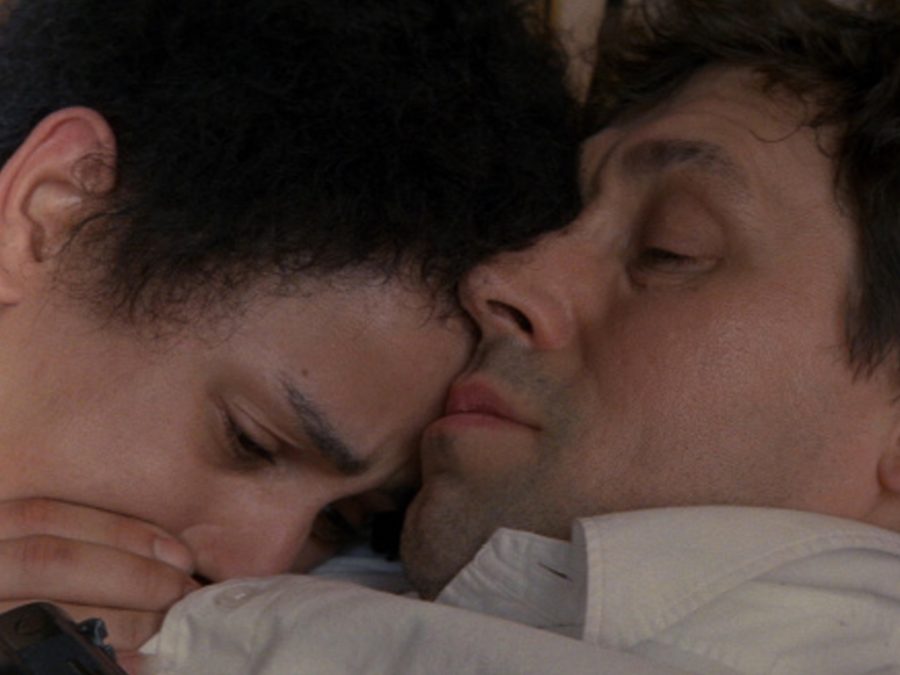
Neil Jordan’s 1992 The Crying Game is a film that was almost not made at all. “At the time nobody wanted to back it,” said Jordan in an interview with the Irish Times in 2017. “It was about political violence and terrorism. And gender.” Set against the backdrop of continued political unrest and tension in Northern Ireland at the time, The Crying Game is far from a conventional political thriller, rather an exploration of human nature in the darkest of circumstances told through the lens of the main protagonist Fergus, played by Stephen Rea in a career-defining performance.
The film follows the character of Fergus, a member of the Irish Republican Army who is tasked with guarding captured British soldier Jody (Forest Whitaker) and the two strike up an unusual friendship despite their obvious differences. Albeit brief, their intimate encounter leads Fergus on a journey to London, where he travels to fulfill his promise to Jody to take care of his lover Dil (Jaye Davidson.) Ultimately as he begins to fall in love with Dil and as the IRA cell tracks his every move, Fergus is forced to decide between what he wants and what his nature dictates he must do.
Rea’s performance as Fergus is immensely thoughtful and sensitive and the audience watches as he slowly begins to question the violent actions of his fellow IRA soldiers through his blossoming friendship with Jody. Their brief exchanges soon develop into meaningful conversations as they talk about nature, race, politics and love. The hostage situation also necessitates a physical intimacy that The Crying Game dwells on throughout. There are multiple scenes where Fergus feeds Jody because his hands are tied up and at one point even has to help him urinate, which makes for some light comic relief amidst grim reality. Physical closeness is emphasised by close-angle camerawork: Fergus reaches into the inside pocket of Jody’s jacket because Jody wants to show him a picture of Dil in his wallet, and the camera dollies in on a Dutch angle of Fergus standing next to Jody, his hand in Jody’s pocket and his gun at Jody’s temple, highlighting the unspoken power imbalance which underpins their relationship.
It soon becomes clear to the audience that Fergus does not fit the mold of hostile terrorists like his counterparts and the violence displayed seemingly goes against his nature. The film tellingly uses the fable of the scorpion and the frog throughout to highlight the innate nature of humanity, as told by Jody to Fergus in one of their late-night conversations. A frog was going to cross a river when a scorpion asks if he can ride on his back. “You’ll sting me,” says the frog, but the scorpion promises not to. Halfway across, though, the frog feels a “hot spear” in his side. “Why did you sting me? Now we’ll both drown.” “I couldn’t help it,” explains the scorpion. “It’s my nature.” In context of the scorpion story, “crossing the river” is analogous to fitting in with a divided Northern Ireland. Through this forbidden friendship, Fergus has therefore blurred the boundaries of perceived ‘good’ and ‘bad’, upsetting the equilibrium of a deeply politicised society as he questions philosophical concepts of nationhood, politics and love and the very essence of humanity itself.

The second act follows Fergus as he attempts to navigate a new life and identity in London, as Jody continues to haunt his dreams. Assuming a fake Scottish identity, he tries to break his IRA ties and make true his promise to Jody. After tracking Dil down at a bar in East London, Fergus soon begins to develop romantic feelings for her, which leads to one of the most infamous cinematic twists in any film of the decade – Dil is a trans woman.
In many ways it is easy to reduce the film to this single scene, which shocked audiences and became central to the marketing campaign that made The Crying Game such a hit in the US. Revisiting the film now, this ‘reveal’ reflects the lack of understanding and acceptance of trans and queer people in the 1990s. When Fergus realises that Dil is not biologically a woman, his initial reaction is one of upset and panic, bordering on violence, which reflects many similar cases of violence against trans and gender-nonconforming people around the world. By framing this scene as a shocking revelation, the audience is encouraged to gasp at Dil’s gender identity rather than focus on the relationship that ultimately develops between the two main characters.
Despite its clumsy execution, the revelation which dominates the second part of the film can also be viewed as another means by which The Crying Game explores themes of nature and identity, as Fergus begins to question his own gender identity and fluid concepts of sexuality. In an interview with film critic Marina Burke in 1993, Jordan drew parallels between moral choices and gender identity, explaining that Fergus “only survives . . . by taking on what you would think of as feminine virtues . . . [being] more understanding, compassionate”. This deep sense of empathy and loyalty to those he loves is reflected in Fergus’ continued attempts to protect and disguise Dil from what he perceives to be his own cruel and inescapable identity.
Rea’s performance as Fergus marked a landmark moment within the wave of ‘ceasefire cinema’ of the 1990s which sought to delve into the complex nature of 20th-century Anglo-Irish conflict, blurring boundaries of political, sexual, and national identity. Fergus’ sexuality and his Irishness mirror one another, both existing in these in-between spaces, both parts of his nature but with competing definitions of themselves. An Irishman in England occupied a double existence, legally, socially, and politically. In London, Fergus is both a foreigner – correcting calls of ‘paddy’ – and not, as he gains acceptance from Dil and the queer community. Fergus spends the majority of the film denying things about himself that ultimately cannot be denied.
The Crying Game is a crucial piece of Irish cinema as it is one of very few films to tackle the Troubles from the point of view of an IRA volunteer. This perspective would be bold today, but in 1992, a full six years before the Good Friday agreement began the end of hostilities, it was near enough revolutionary and perhaps an explanation for initial low box office ratings, as many did not want to be seen to be sympathizing with Rea’s remarkably humanistic performance. The film eventually received critical acclaim, with six Oscar nominations including best actor, and a win for best original screenplay.
While The Crying Game has a deft touch for the complex nuances of gender and sexuality, it is ultimately about much more than that. It’s a film about shifting identities, queer bodies, and overcoming barriers and at its heart is a character whose identity is in constant flux: Fergus. Thirty years on The Crying Game is a film that continues to transcend borders in terms of both country and content, as violence and brutal sets of beliefs are challenged by Fergus’ innate goodness making the message of The Crying Game, despite being a film about the IRA, a remarkably positive one. The film ends with Dil asking Fergus why he fell for her, and he tells her the story of the scorpion and the frog. It’s in his nature.
Published 15 Jun 2022

By Anna Cafolla
Lisa McGee’s candid sitcom is a welcome antidote to the usual portrayals of Northern Ireland.

Two sisters are reunited as their community comes apart at the seams in Cathy Brady’s Troubles-era drama.